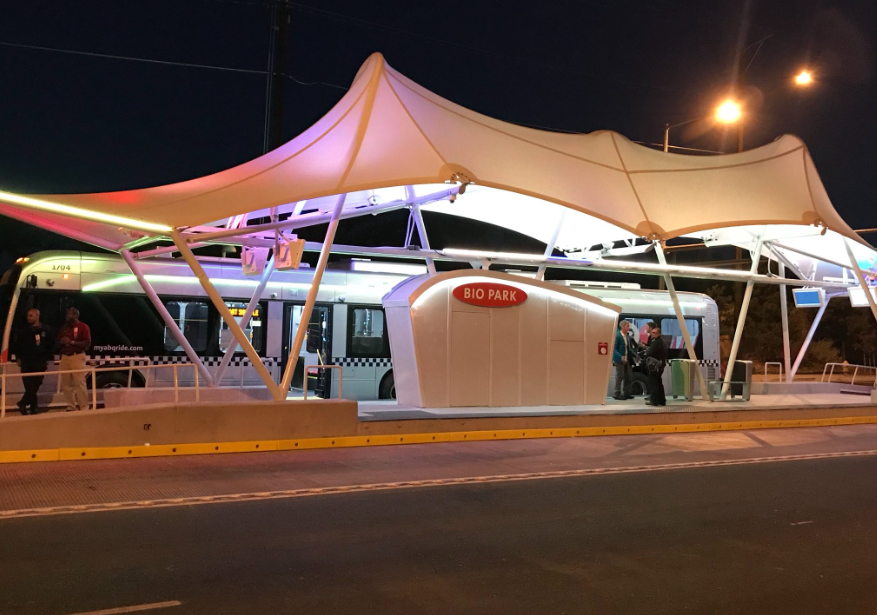Albuquerque's long-awaited bus rapid transit project -- "ART" -- was set to open with full service this spring.
But the city recently got some bad news: The electric buses manufactured specifically for ART are behind schedule. Several flaws have been flagged in the vehicles -- mostly minor -- that need to be fixed before the new bus service can be fully operational. There are also some issues with the stations.
The city's newly elected mayor, Tim Keller, described the project as "a bit of a lemon," saying he didn't know when ART would be operational.
The situation has gripped the local press, but Michael Kodransky at the Institute for Transportation and Development Policy, an expert in bus rapid transit systems, says the wrinkles can be ironed out of ART.
"There are hiccups in all these systems," he told Streetsblog. "It’s about working through the hiccups and managing the change."
The city ordered specially designed buses with doors on both sides, which enables them to pick up passengers from the median-aligned bus stops and conventional curbside stops.
According to the Albuquerque Journal, the bus manufacturer, California-based Build Your Dreams, has only delivered nine of the 22 buses it was supposed to have ready by October. Some of the buses that have been delivered have defects like cracked battery cages and wheelchair belts that are not uniformly located.
In addition, some of the bus mirrors are hitting the structures that hold up station roofs. And some station platforms are not built at the perfect grade, which can create problems for wheelchair users disembarking from a bus, according to the Journal. One intersection along the route may need to be redesigned to reduce the chance that turning drivers will hit the station.
These are not major problems, said Kodransky, and the city should be capable of fixing them. Albuquerque has some leverage with Build Your Dreams: The city doesn't have to fork over its $22 million payment until the order is complete.
Since ART isn't Keller's project -- it was initiated by his predecessor, Richard Berry -- Kodransky thinks there may be a political impetus behind the negative spin.
"I watched the press conference that he gave and he started out by saying this project is a lemon," Kodransky said. "All systems within the first six months require finessing as you’re figuring out how to make it work right. To call it a lemon, I would say that’s not fair."
The center-running ART busway design received a "gold" rating from ITDP -- the highest ever awarded to an American bus rapid transit route.
Berry just left office at the end of 2017, and it's possible he rushed to cut the ribbon on ART before the timing was right. Now, it's not clear whether Keller wants the project to succeed.
"Change is hard," said Kodransky. "Within one administration it’s always hard to manage change. Between administrations, it’s even tougher."






